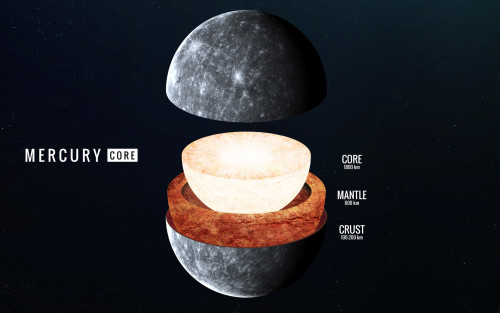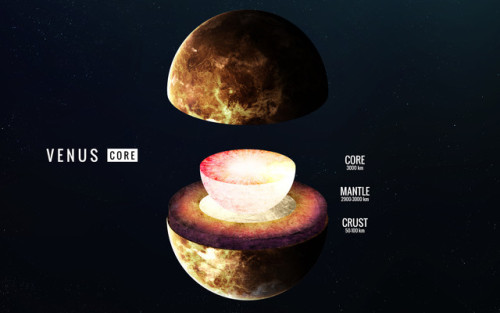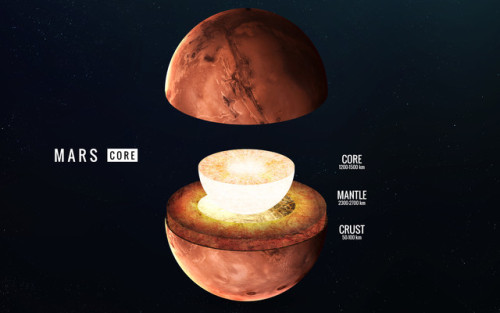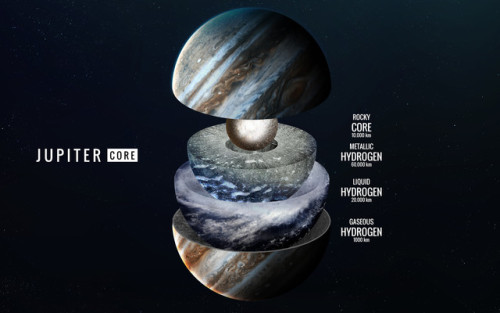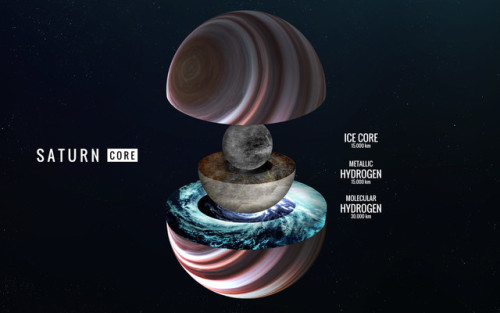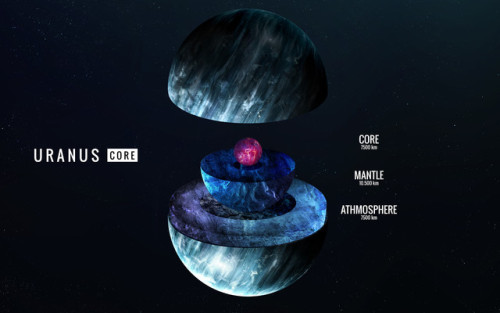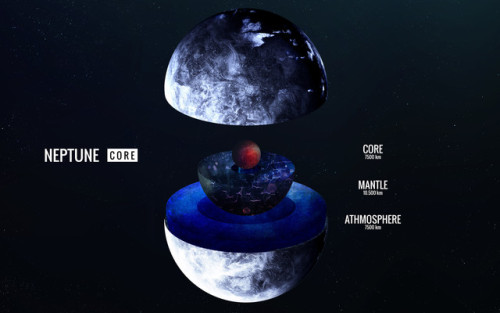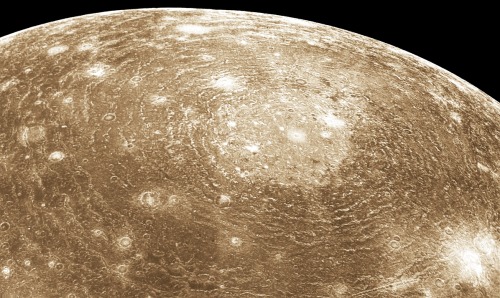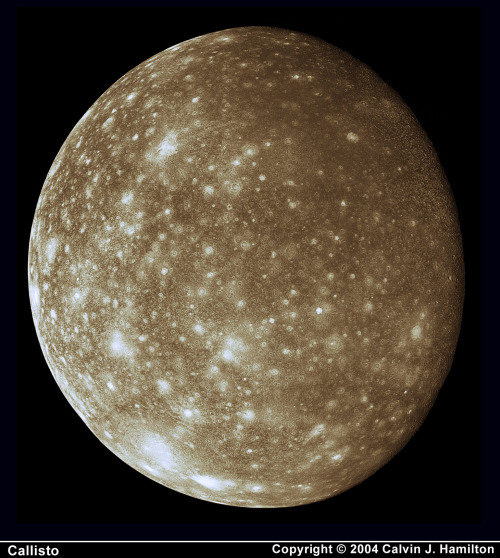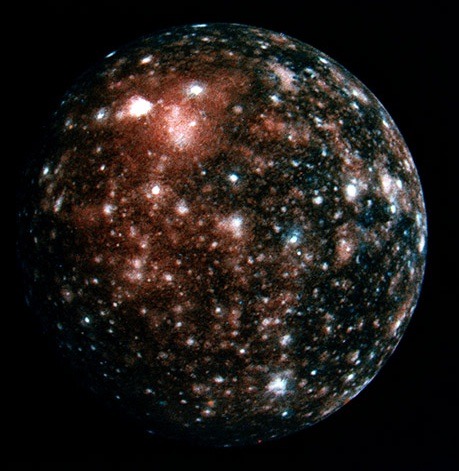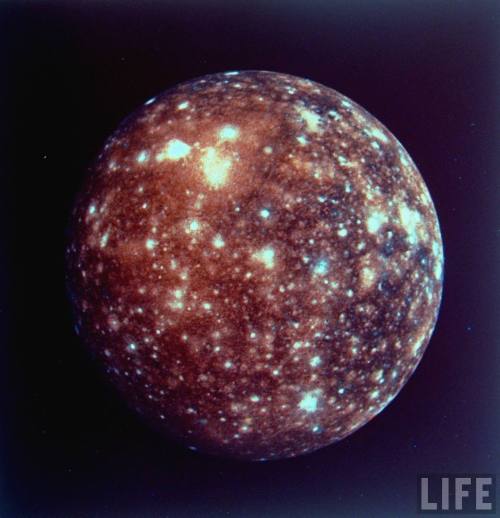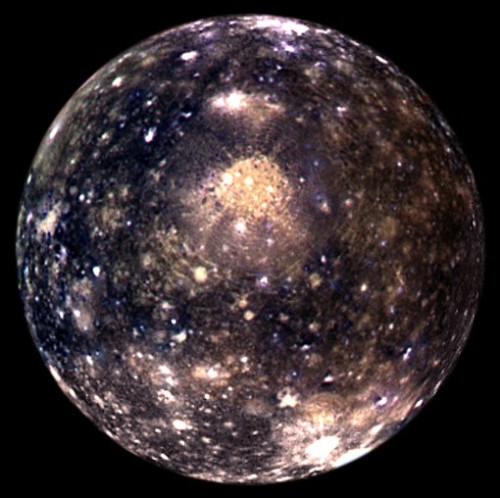TODAY IN HISTORY: The First-ever Color Image Of Mars, Taken By NASA’s Viking 1 Lander On July 21, 1976.

TODAY IN HISTORY: The first-ever color image of Mars, taken by NASA’s Viking 1 lander on July 21, 1976. (San Diego Air & Space Museum)
More Posts from Fillthevoid-with-space and Others

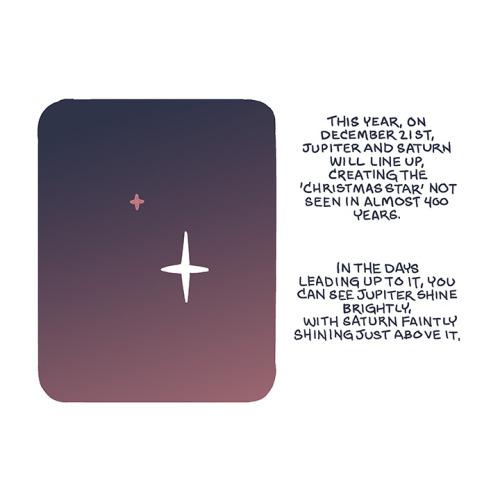

Description: A four panel comic. In the first two panels, me and my father are squinting at the night sky before I brighten and declare that ‘OH! I see it!’ In the next panel is the night sky with two stars. One bright one in the lower right center and a slightly dimmer one just above and to the left of the first one. Text reads: ‘This year, on December 21st, Jupiter and Saturn will line up, creating the ‘Christmas Star’ not seen for almost 400 years. In the days leading up to it, you can see Jupiter shine brightly, with Saturn faintly shining just above it.’ In the final panel I am closing my window and looking up at the sky. Captions read: ‘I keep looking up, finding and refinding it.’ And ‘The planets are always there, but this moment makes it all seem so fleeting.’

Earth is a super special world. It has life on it, and getting conditions just right so that life will survive is an incredibly difficult task. Other planets and other moons in our solar system may look like they could have life on them, but it just didn’t happen.
Life on other planets is for a different episode, though. In this one, I’m talking about what we can see on our close neighbors, the eight (maybe seven?) planets in our solar system. Learn how they were discovered, what naming conventions we use for them and their moons, how to differentiate between them, and what probes we’ve sent out to learn more about them. Also enjoy snippets from the lovely orchestral suite written for each planet by Gustav Holst! It’s the longest episode so far but I promise it’s worth it.
There’s a timeline below the cut in addition to the other resources because hooboy did I mention a lot of people. I may also put together a timeline of probes... But that’s for another podcast. Maybe the next podcast! Let me know what you think I should research by messaging me here, tweeting at me at @HDandtheVoid, or asking me to my face if you know me in real life. And please check out the podcast on iTunes, rate it or review it if you’d like, subscribe, and maybe tell your friends about it if you think they’d like to listen! Also below the cut are my sources, music credits, vocab list, and the transcript. I mention a book, a play, a poem, and a few works of art, and I quote an astronomy book in this episode so if you want to see that written down, those sources are there as well.
(My thoughts for the next episode were spectroscopy, auroras, or probes through the ages. Let me know by the 21st and I’ll have the next podcast up by July 31!)
Glossary:
auroras - a light display that occurs when a magnetosphere is sufficiently disturbed by solar wind that charged particles scatter into the upper atmosphere and lose their energy.
magnetosphere - an invisible barrier that surrounds a celestial objet. It is often generated by the movement of the liquid metal core of the object. Around a planet, it deflects high-energy, charged particles called cosmic rays that can either come from the Sun or, less often, from interstellar space.
prograde - when a planet spins from east to west.
retrograde - when a planet spins from west to east.
sol - a unit of time measuring one Martian day, or 24 Earth-hours and 40 Earth-minutes. The immediately previous Martian day is called yestersol.
transit of Mercury/Venus - when a planet passes in front of the Sun.
Script/Transcript
Timeline of people mentioned
Nicolaus Copernicus, Polish (1473-1543)
Tycho Brahe, Danish (1541-1601)
Galileo Galilei, Italian (1564-1642)
Johannes Kepler, German (1571-1630)
Simon Marius, German (1573-1625)
Pierre Gassendi, French (1592-1655)
Giovanni Cassini (also known as Jean-Dominique Cassini), Italian/French (1625-1712)
Christiaan Huygens, Dutch (1629-1695)
William Herschel, German/English (1738-1822)
Johann Elert Bode, German (1747-1826)
Caroline Herschel, German/English (1750-1848)
Johann Franz Encke, German (1791-1865)
John Herschel, English (1792-1871)
William Lassell, English (1799-1880)
Urbain Le Verrier, French (1811-1877)
Johann Galle, German (1812-1910)
John Couch Adams, English (1819-1892)
Edouard Roche, French (1820-1883)
Heinrich Louis d’Arrest, German (1822-1875)
Asaph Hall III, American (1829-1907)
James Clark Maxwell, Scottish (1831-1879)
Giovanni Schiaparelli, Italian (1835-1910)
Percival Lowell, American (1855-1916)
Eugène Antoniadi (also known as Eugenios Antoniadis), Greek (1870-1944)
Gerard Kuiper, Dutch/American (1905-1973)
Clyde Tombaugh (1906-1997)
Sources:
Who discovered each planet via Cornell University
The mathematical discovery of Neptune and Pluto via University of St. Andrews, where my mom’s boyfriend’s son graduated last year! Mad props, Henry!
Holst’s The Planets via the Utah Symphony
More on Holst’s suite, including music files
Chronology of solar system discovery
MESSENGER information via John Hopkins University Applied Physics Laboratory
Auroras via NASA’s Themis mission
Magnetospheres via NASA, which has a tumblr! You should follow it! Good stuff.
Curiosity rover via NASA
‘Canali on Mars’ debacle via NASA
Mariner 9 via NASA
Origin of ‘yestersol’ and Martian day-length via A Way With Words
Richard Bram: “Superlatives are inadequate; words fail. Look. Think. Be in awe.”
Images of Mars through the years via The Telegraph
Mars-One mission to colonize Mars
Names of all the planet’s moons and their significance in mythology, last updated in 2013 and questionably reliable but from what I know of mythology—and I do know more than most—it’s not too far off.
Table of moons of various planets
Jupiter via NASA
Jupiter moon name facts via NASA
The Galilean Moons of Jupiter via University of Colorado at Boulder
Saturn’s moons via Phys.org
Cassini mission website
Saturn overview via NASA
Saturn’s moon Titan via NASA
Ethane via PubChem
Methane via EPA
Neptune’s moons via Space.com
What is Pluto via NASA
Pluto Overview via NASA
“Dwarf planets may provide the best evidence about the origins of our solar system.”
New Horizons mission via NASA
Pluto and our designations for planets are mentioned very briefly in this Oatmeal comic. I liked it.
Sobel, Dava. The Planets. Viking: NY, 2005.
“But tides raised by the Sun in the planet’s molten middle gradually damped Mercury’s rotation down to its present slow gait” (34).
“Light and heat always hit Mercury dead on, while the north and south poles, which receive no direct sunlight, remain relatively frigid at all times” (35).
“Venusian clouds comprise large and small droplets of real vitriol—sulfuric acid along with caustic compounds of chlorine and fluorine. They precipitate a constant acid rain, called virga, that evaporates in Venus’ hot, arid air before it has a chance to strike the ground” (61).
“…Neptune, where the voices of a female choir, sequestered in a room offstage, are made to fade out at the finale (with no sacrifice in pitch) by the slow, silent closing of a door” (165).
Holst: “Saturn brings not only physical decay but also a vision of fulfillment” (165).
“They occupy a nearby region of perpetual fragmentation known as the Roche zone, named for the nineteenth-century French astronomer Edouard Roche, who formulated the safe distances for planetary satellites” (172).
“It's near twin, Neptune, reveals a more complex beauty in subtle stripes and spots of royal to navy blue, azure, turquoise, and aquamarine” (200).
“This outlying population offered Pluto a new identity—if not the last planet, then the first citizen of a distant teeming shore” (214).
Van Gogh, Vincent. Starry Night (June 1889).
—. Road with Cypress and Star (May 1890).
—. White House at Night (June 1890).
Shakespeare, William. A Midsummer Night’s Dream (1605).
Pope, Alexander. “The Rape of the Lock” (1712). (It’s a mock-epic satiric poem about stealing a lock of hair, not physical rape)
Duane, Diane. Wizards at War. Harcourt Trade Publishers: San Diego CA, 2005.
Intro Music: ‘Better Times Will Come’ by No Luck Club off their album Prosperity
Filler Music: The Planets (1918) by Gustav Holst, performed by the London Symphony Orchestra in 2003.
Outro Music: ‘Fields of Russia’ by Mutefish off their album On Draught

First Female U.S. Astronaut, Sally Ride, Comes Out In Obituary | BuzzFeed
“I hope it makes it easier for kids growing up gay that they know that another one of their heroes was like them,” Sally Ride’s sister, Bear Ride, said.

The last look before her descent in fire…
Will NASA send astronauts to the moon again or any other planet within the next ten years?

@nasaorion spacecraft will launch on the Space Launch system (the largest spacecraft every built, even bigger than the Saturn V rocket!). Both are under construction @nasa currently, and this is the spacecraft that will take us beyond the low earth orbit of the International Space Station, whether that be the Moon, Mars, or beyond. We will conduct test missions with astronauts on Orion in the early 2020s, and a first mission will take us 40,000 miles beyond the Moon!

No matter where you hang your stockings, I wish you a very Merry Christmas!
-
 warcotuj8746 liked this · 10 months ago
warcotuj8746 liked this · 10 months ago -
 l-sea-blog liked this · 6 years ago
l-sea-blog liked this · 6 years ago -
 lowbrowhighlife reblogged this · 6 years ago
lowbrowhighlife reblogged this · 6 years ago -
 georgethetrex liked this · 6 years ago
georgethetrex liked this · 6 years ago -
 brothers-shadow reblogged this · 6 years ago
brothers-shadow reblogged this · 6 years ago -
 brandef reblogged this · 6 years ago
brandef reblogged this · 6 years ago -
 antiapathy1980 liked this · 6 years ago
antiapathy1980 liked this · 6 years ago -
 sudwalla reblogged this · 6 years ago
sudwalla reblogged this · 6 years ago -
 sudwalla liked this · 6 years ago
sudwalla liked this · 6 years ago -
 mrvivienne-blog liked this · 7 years ago
mrvivienne-blog liked this · 7 years ago -
 stephphs liked this · 7 years ago
stephphs liked this · 7 years ago -
 ae8 liked this · 7 years ago
ae8 liked this · 7 years ago -
 mimoschaino reblogged this · 7 years ago
mimoschaino reblogged this · 7 years ago -
 gravethrone liked this · 7 years ago
gravethrone liked this · 7 years ago -
 therepublicofletters liked this · 7 years ago
therepublicofletters liked this · 7 years ago -
 ashipwreckcoast liked this · 7 years ago
ashipwreckcoast liked this · 7 years ago -
 backbenttulips liked this · 7 years ago
backbenttulips liked this · 7 years ago -
 seaglassandeelgrass reblogged this · 7 years ago
seaglassandeelgrass reblogged this · 7 years ago -
 thebodegacat reblogged this · 7 years ago
thebodegacat reblogged this · 7 years ago -
 jackiechun361 liked this · 7 years ago
jackiechun361 liked this · 7 years ago -
 ssinertia reblogged this · 7 years ago
ssinertia reblogged this · 7 years ago -
 ssinertia liked this · 7 years ago
ssinertia liked this · 7 years ago -
 saudadeklimt reblogged this · 7 years ago
saudadeklimt reblogged this · 7 years ago -
 a-billion-other-things liked this · 7 years ago
a-billion-other-things liked this · 7 years ago -
 melophobist reblogged this · 7 years ago
melophobist reblogged this · 7 years ago -
 saganart reblogged this · 7 years ago
saganart reblogged this · 7 years ago -
 glow-dust reblogged this · 7 years ago
glow-dust reblogged this · 7 years ago -
 michelangel-no liked this · 7 years ago
michelangel-no liked this · 7 years ago -
 rosybrowns reblogged this · 7 years ago
rosybrowns reblogged this · 7 years ago -
 le1epic1lol liked this · 7 years ago
le1epic1lol liked this · 7 years ago -
 canihazfriday reblogged this · 7 years ago
canihazfriday reblogged this · 7 years ago -
 canihazfriday liked this · 7 years ago
canihazfriday liked this · 7 years ago -
 jeffrothehomo reblogged this · 7 years ago
jeffrothehomo reblogged this · 7 years ago -
 jeffrothehomo liked this · 7 years ago
jeffrothehomo liked this · 7 years ago
A podcast project to fill the space in my heart and my time that used to be filled with academic research. In 2018, that space gets filled with... MORE SPACE! Cheerfully researched, painstakingly edited, informal as hell, definitely worth everyone's time.
243 posts


